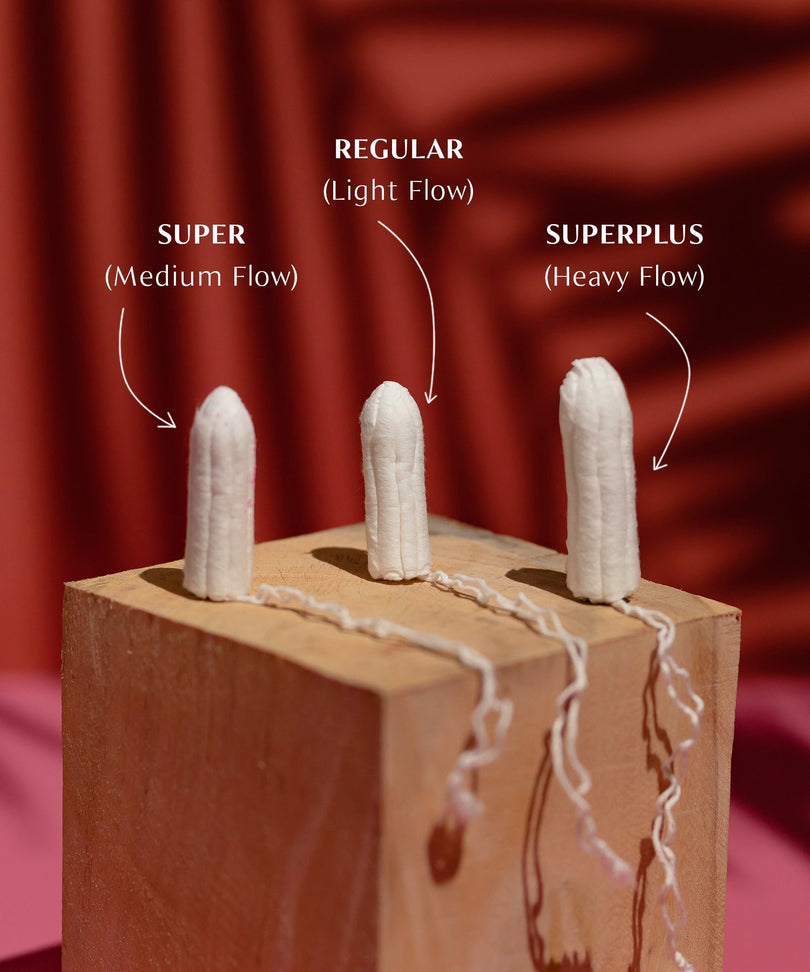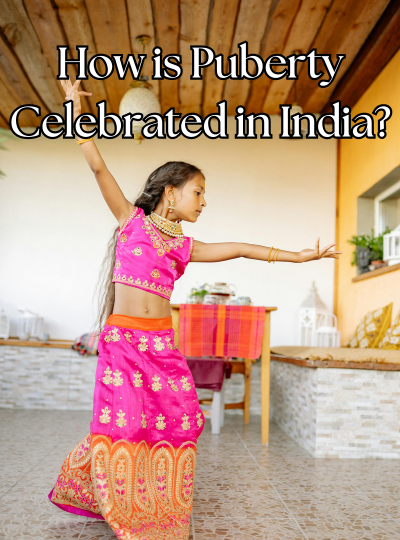Puberty Ceremony in India - A Glimpse into History
In India, puberty ceremonies have traditionally been more than just a celebration. They were used to signify a girl's readiness for marriage and childbearing, as well as to provide education about menstruation, womanhood, and societal expectations. However, as society and the law have changed, the focus has shifted to the well-being and education of girls. Nevertheless, puberty ceremonies still have cultural significance in many parts of India.
Let’s look at some of the interesting ways menstruation is celebrated across India.
1. Half Saree Ceremony: Karnataka
The Half Saree Ceremony, also known as Ritu Kala Samskara, is a widely celebrated puberty rite in South India, particularly in states like Tamil Nadu, Andhra Pradesh, and Karnataka. Traditionally, this ceremony served a dual purpose: marking a girl's entry into womanhood and announcing her eligibility for marriage.
During the Half-Saree Ceremony, a young woman is adorned with a half-saree, symbolising her transition to more mature attire. Family and friends shower her with blessings and gifts. The ceremony provides an opportunity for older female relatives to impart valuable knowledge about womanhood, menstrual hygiene, and societal expectations. It marks the beginning of a new chapter in the girl's life, filled with responsibilities and opportunities.

Tuloni Biya, also known as Nua Tuloni and Shanti Biya involves a mock wedding. The young girl who has had her first period is confined for a few days, during which she is not allowed to consume solid cooked food or touch any person or object. On the fourth day, she is bathed with a mixture of turmeric and water and dressed in traditional attire, declaring herself an adult through her clothes. A banana tree is planted at the site to commemorate the occasion.
From the fourth to the seventh day of her first period, the girl is allowed to consume a special dish called hobbis once a day, preferably cooked by herself. On the seventh day (or any other day selected as auspicious by the officiating priest), the girl is again taken to the bathing site, this time accompanied by the women of the community.
They sing biya naam and offer prayers while she is bathed. The procession then goes to the girl's home, banana tree and all, where wedding rituals are observed, followed by a feast and gift-giving, as in other celebrations.
Also read - Abortion in India
3. Ambubachi Mela: East India
Ambubachi Mela is one of the largest events in eastern India, and it is celebrated in June every year. It is the most significant festival of the Kamakhya temple and is more of a ritual of austerities than a festival, celebrated with Shakti rites. The belief is that Kamakhya embodies the mother cult, the Shakti.
During the period of Ambubachi, which is from the seventh to the tenth day of the Hindu month of "Asadha," the doors of the shrine are closed to all, as it is believed that Goddess Kamakhya goes through the annual cycle of menstruation.
The doors are ceremonially opened on the twelfth day, and a big fair is held at the temple premises on that day. Daily worship is suspended during this period. All agricultural work like digging, ploughing, sowing, and transplanting of crops are forbidden.
During these days, widows, Brahmacharis, and Brahmins avoid cooked food. On the fourth day, after Ambubachi is over, household items, utensils, and clothes are washed, cleaned, and purified by sprinkling sacred waters, and worship of Goddess Kamakhya begins after cleansing and other rituals are performed. Entry to the Shrine is considered to be auspicious after this
4.Zeliangrong Festival, Manipur
In Zeliangrong society, when a child turns fourteen or fifteen years old, he or she is introduced to a particular dormitory. The initiation ceremony takes place during the festival of Gaan-Ngai, during which the leader of the dormitory formally recognises the new member by giving them a piece of meat known as Janphop. This ceremony is called Khangchu Kailu Thaimei.
According to the Dictionary of Religion, initiation is "the act of entering the stream of wider and deeper consciousness." It is a rite that separates the individual from the world of childhood and incorporates them into the world of adulthood. Traditionally, after initiation, a boy or girl is considered physically and socially mature and is permitted to get married because he or she is capable of reproduction.
(Source: Buddha Kamei for The Sangai Express)
5.Ao Naga Ceremonies: Nagaland
The puberty rites among the Ao Naga tribes of Nagaland are collectively known as Teptsu Asep and are based on progressive stages of tattooing children after they are ten years old for five years. Unlike other communities in India, the Ao Naga don’t give much importance to the menarche as a symbol of the onset of puberty for girls. They treat puberty as a socio-cultural construct.
Their ceremonial rites are conducted in group batches of young girls of around the same age. The first tattoo is a more widely accepted mark of the start of puberty. Village girls are tattooed around the post-harvest period from December to January, during which elders counsel and offer advice to the young girls about adolescence and then adulthood. After the tattooing process, the girls enter dormitories called Tsuki where they remain until they get married.

(Image Courtesy: Pete Oxford)
Also read - Birth Control & Contraceptives
6. Thirandukalyanam, Kerala
In Kerala, a coming-of-age ceremony called Thirandukalyanam is performed for young menstruators to celebrate their first period. During the ceremony, the menstruators are given a deep massage, cleansed, and given a special diet rich in iron and ayurvedic medicines. After spending three nights in a windowless room, the young menstruator is bathed communally with turmeric paste. At this point, upper-caste adolescent girls are given her moolakkacha and she is instructed in all the rites and duties of her maidenhood.
The community celebrates the occasion with feasts and gifts of clothing, jewellery, and wealth that are presented to the young menstruator. Menarche is a significant event as it marks the onset of her training to become the matriarch of the household. The Thirandukalyanam ceremony emphasises matrilineality, and it is believed to underscore the significance of the young menstruator's fertility and her preparation for a future leadership role as a matriarch.
Conclusion - Puberty ceremony in India
Each of these puberty ceremonies carry with them a rich history spanning centuries of tradition. However, with the changing times, it is important to recognise the potential harm of such ceremonies on the emotional well-being of young girls.
While menstruating signifies that a girl can bear children, the emotional maturity to be a wife and a mother, and the ability to consent to safe sex should be given more priority, especially in parts of India where child marriage is still a norm.
Superstitious practices of confining menstruating girls to rooms and restricting their diets can prove more harmful to the girl. Concepts of purity associated with menstruation also need to be challenged.
Thus while puberty ceremonies should be celebrated to honour cultural traditions and commemorate the rites of passage of young girls, the ritual practices can be modified to combat any irrational and harmful practices.
More to read









